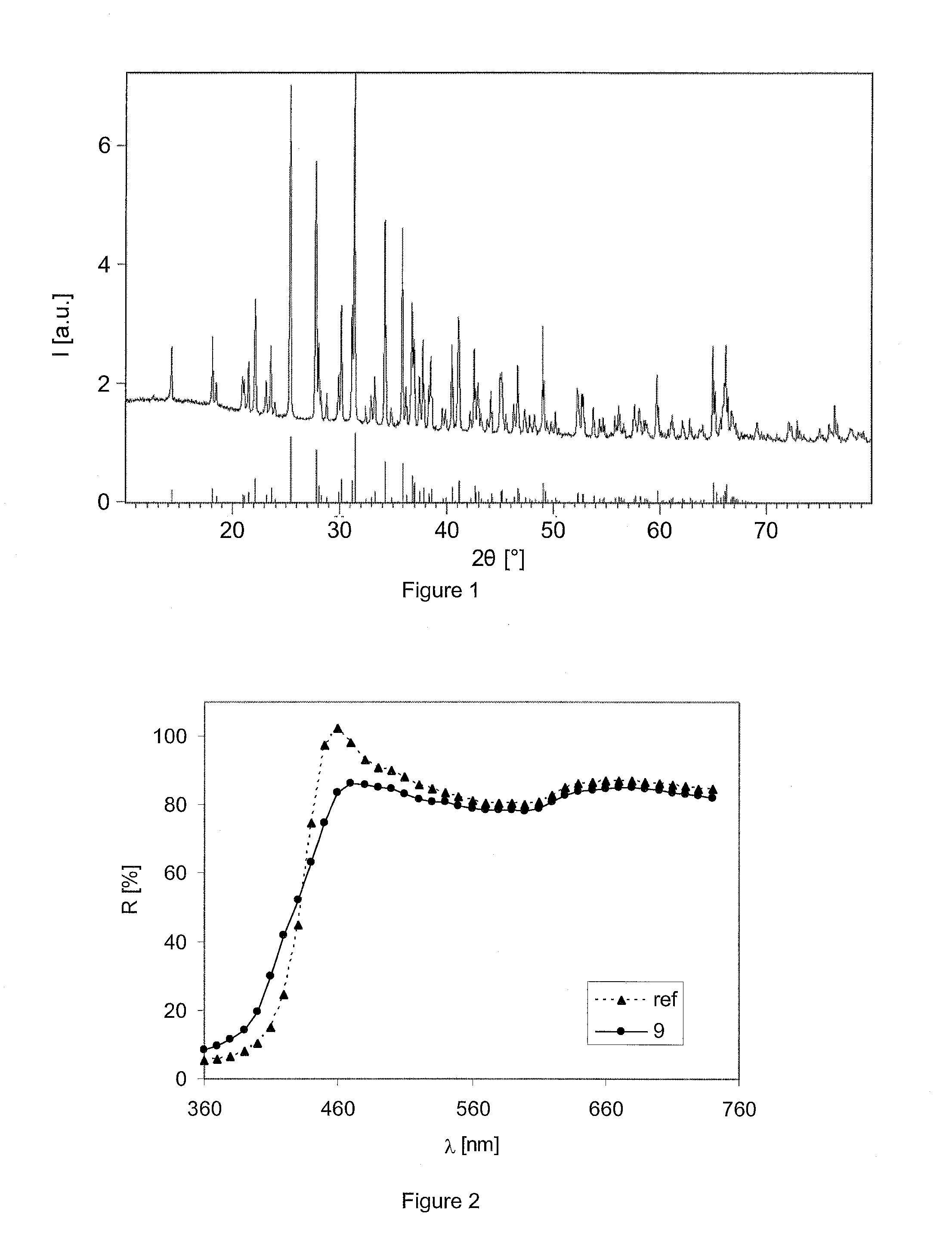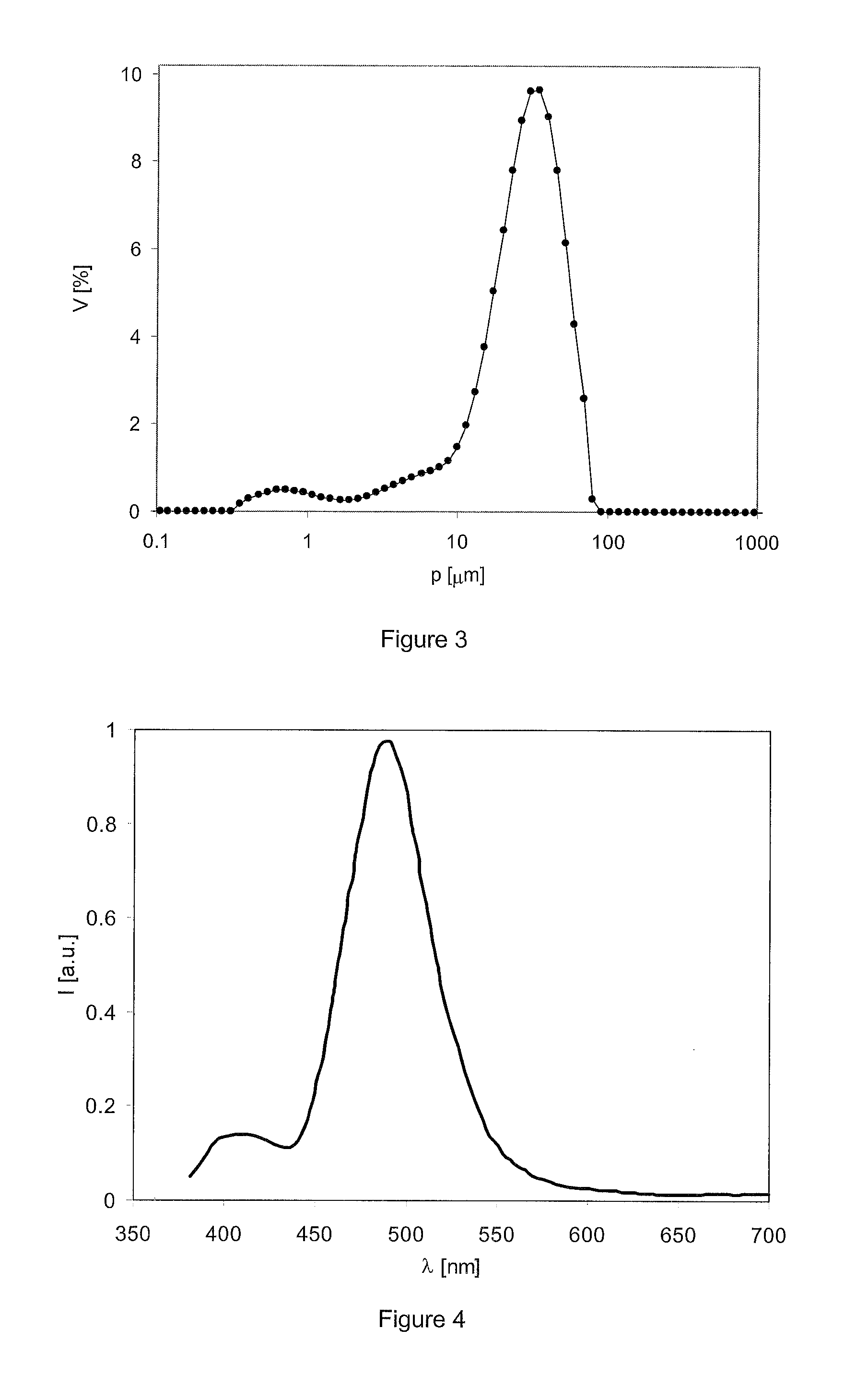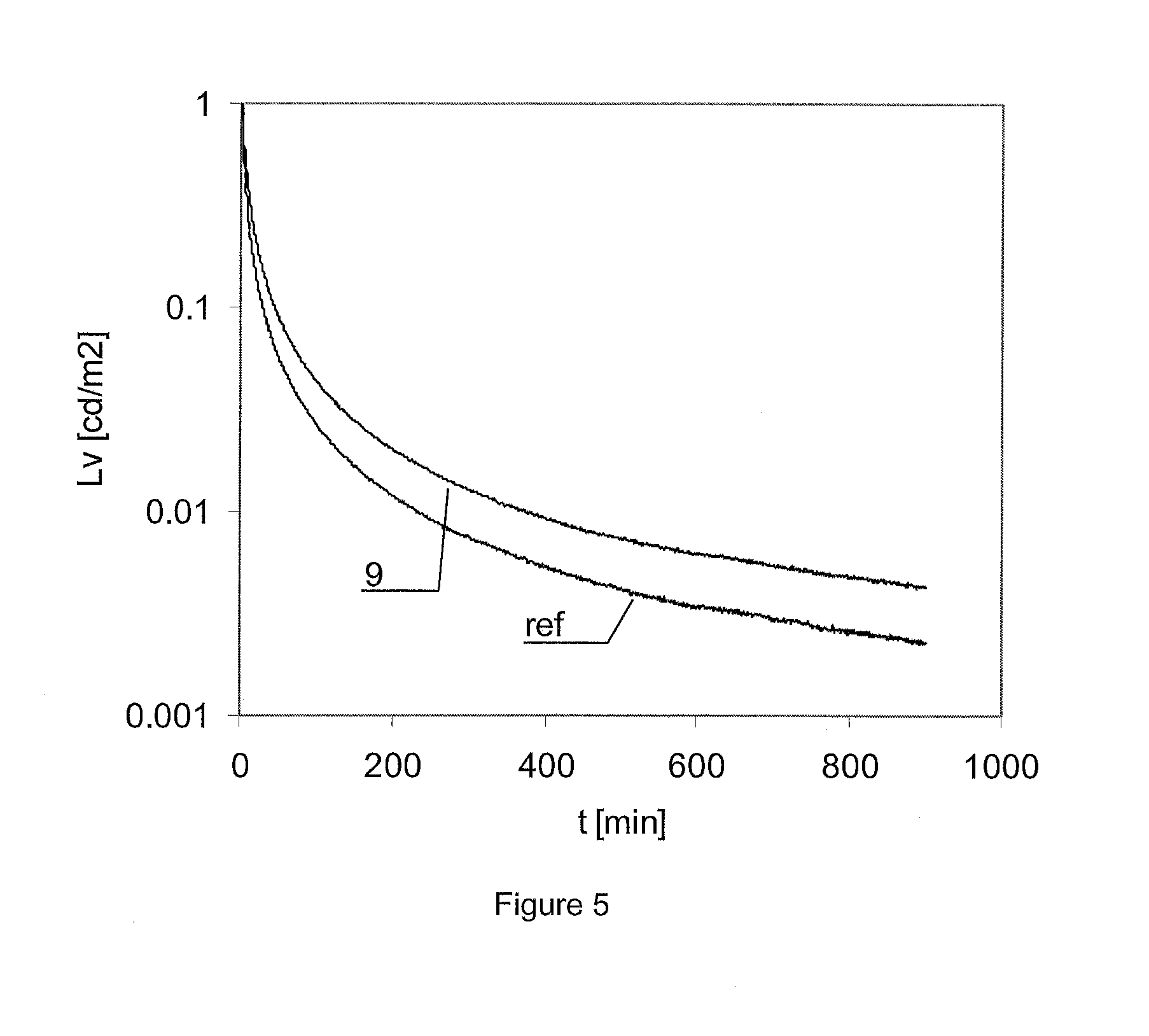Long decay phosphors
a phosphorescence intensity and long-distance technology, applied in the field of long-distance phosphorescence, can solve the problems of inevitably reducing the phosphorescence intensity of the product no indication on the performance of the different materials, etc., and achieves favourable properties, small al/sr, and higher dy/sr ratios
- Summary
- Abstract
- Description
- Claims
- Application Information
AI Technical Summary
Benefits of technology
Problems solved by technology
Method used
Image
Examples
example 1
[0063]The chemical starting materials (pure alpha or gamma Al2O3, SrCO3, H3BO3, Eu2O3 and Dy2O3) were weighed on a precision balance (±0.1 mg) and mixed together. In the case of materials used in this example, the element ratios (as molar ratios) in the starting materials were Al / Sr=3.3, Eu / Sr=0.0015, Dy / Sr=0.01 and B / Sr=0.175.
[0064]The different starting materials (total weight of typically 180-200 g) were directly put in a 11 milling (attrition) bowl. 1.5 kg alumina balls and 225 ml water were added to the powders before milling at 20° C. during 15 minutes at 400 rpm.
[0065]After milling, the suspension was filtered to remove the alumina balls, which were then rinsed with 375 ml water. The suspension was then spray dried.
[0066]A batch of 30 g spray dried powder was then put in a 99.7%-pure alumina crucible and heat treated at 1400° C. in a high temperature oven under reducing atmosphere (mixture of nitrogen and hydrogen in a ratio of 95:5, forming gas): heat-up time of 7 h, dwell-t...
examples 2 to 7
[0072]In the examples 2 to 7 further samples of phosphors were prepared in the same manner as provided in example 1. The only parameter which was varied was the amount of europium oxide, to achieve the values for the ratio Eu / Sr listed in Tables 1a and 1b.
[0073]In the reference example the commercially available product with blue emission and white day colour from the supplier LumiNova AG / RC Tritec AG, Teufen, Switzerland was used.
[0074]The particle size distribution and layer thickness were the same in all samples, in order to avoid bias in the comparison of the results.
[0075]The Tables 1a and 1b below show the influence of the Eu concentration on the phosphorescence intensity and day colour, for Al / Sr=3.3, Dy / Sr=0.01 and B / Sr=0.175 in the starting materials. The day colour shifted clearly towards yellow with increasing Eu concentration, corresponding to increasing absolute values of a* and b*. The phosphorescence intensity increased with increasing Eu concentration, and reached a ...
examples 8 to 14
[0079]In the examples 8 to 14 further samples of phosphors were prepared in the same manner as provided in example 1. The amount of Al2O3 relative to SrCO3 was varied, in order to obtain the ratios mentioned in Table 2. The persistence of the different samples was measured during several measurement runs. As six samples can be measured simultaneously, the persistence values of Table 2 were normalized with respect to the reference sample.
[0080]Samples with an Al / Sr ratio of 2.9, and 3.7, respectively, were lower in performance than the samples in the 3.1 to 10%) of phases other than Sr4Al14O25. An Al / Sr ratio in the 3.1 to 4Al14O25. An Al / Sr ratio in the 3.2 to 3.4 range is particularly preferred as it allows to obtain phosphors with high persistence and less than 6% of phases other than Sr4Al14O25.
[0081]The table confirms that the Al / Sr ratio did not influence significantly the day colour in the tested concentration range, and that there seemed to be an optimum around Al / Sr=3.3 for ...
PUM
| Property | Measurement | Unit |
|---|---|---|
| molar ratio | aaaaa | aaaaa |
| molar ratio | aaaaa | aaaaa |
| molar ratio | aaaaa | aaaaa |
Abstract
Description
Claims
Application Information
 Login to View More
Login to View More - R&D
- Intellectual Property
- Life Sciences
- Materials
- Tech Scout
- Unparalleled Data Quality
- Higher Quality Content
- 60% Fewer Hallucinations
Browse by: Latest US Patents, China's latest patents, Technical Efficacy Thesaurus, Application Domain, Technology Topic, Popular Technical Reports.
© 2025 PatSnap. All rights reserved.Legal|Privacy policy|Modern Slavery Act Transparency Statement|Sitemap|About US| Contact US: help@patsnap.com



